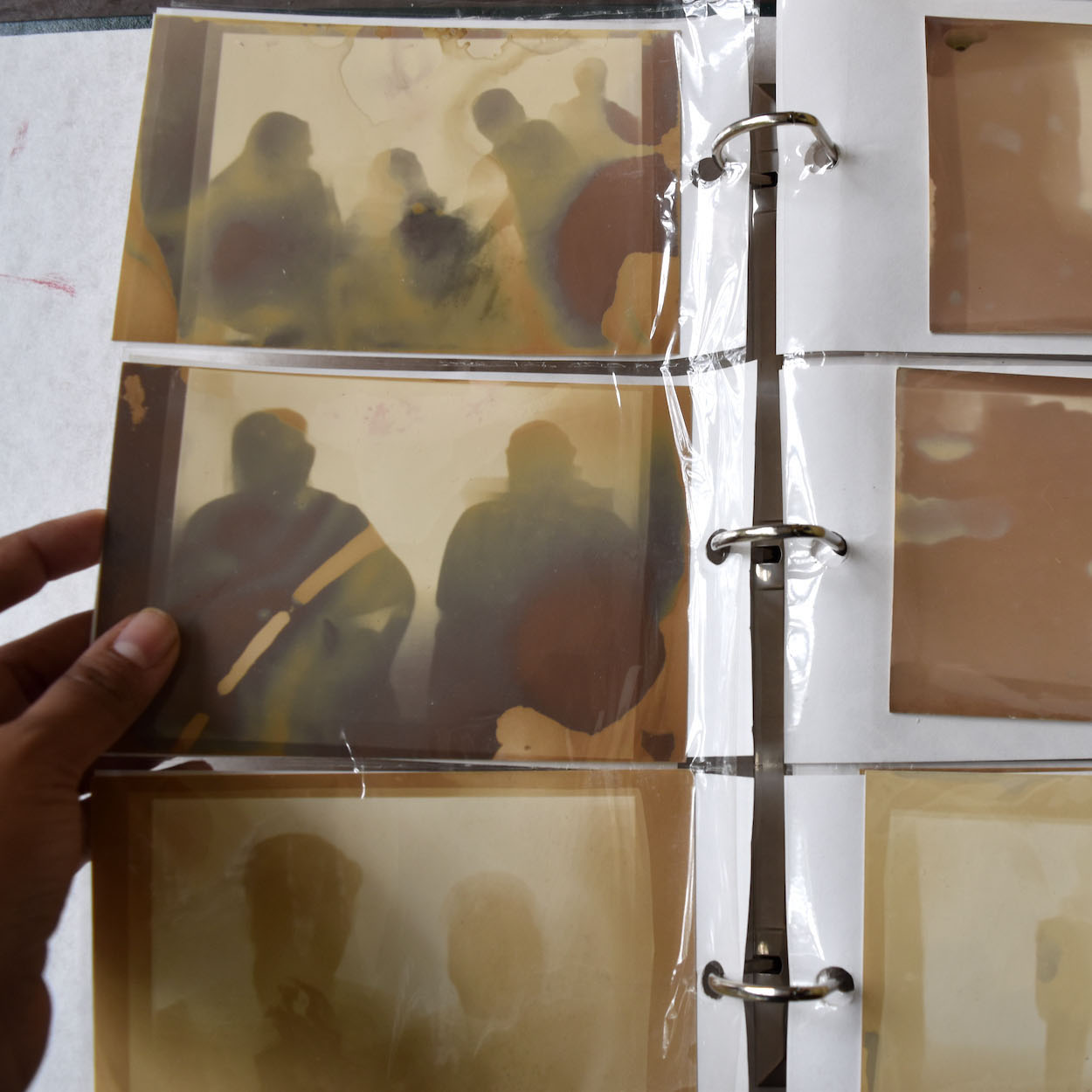selected work
IN THE BELLY OF THE BEAST
website, 3D, porcelain, risograph, artist books
In The Belly of the Beast is a multifaceted artwork that includes an interactive website, two artist books, and porcelain bookends. The work is inspired by Tipu's Tiger, a famous automaton depicting a tiger mauling a British soldier, which was seized from Tipu Sultan in 1799 and now resides at the V&A Museum in London. The work delves into themes such as tiger hunting in colonial India, the tiger as a symbol of resistance and strength, and the broader meaning of being "in the belly of the beast."
A·KIN
code, video, digital print, risograph, website
A·kin looks at how photographic archives and family albums are seen and categorised by humans and machine vision systems. The project highlights the difficulties to grasp anthropological, historical and cultural notions about personal and collective identity when considering photographs as mere data points.
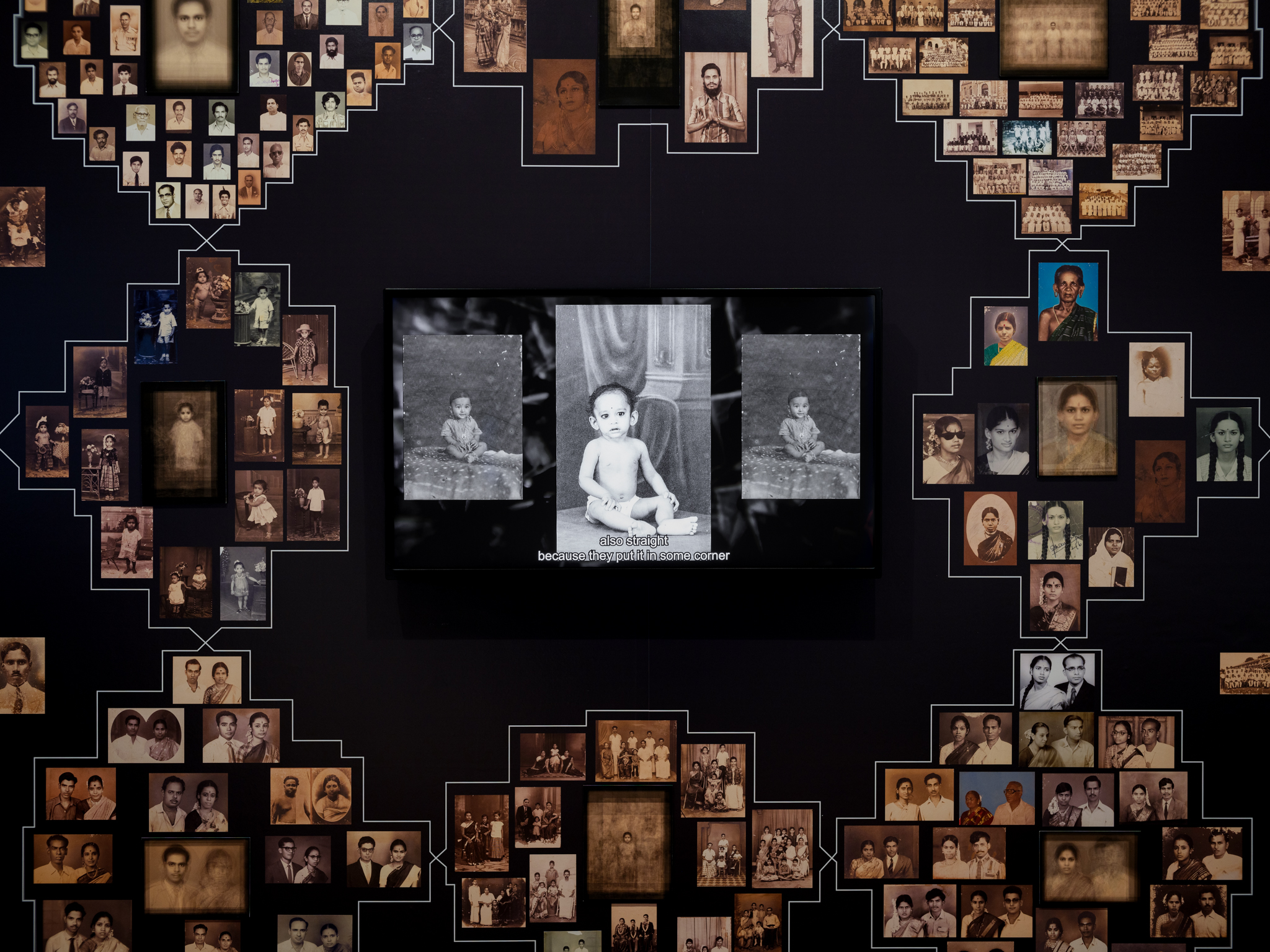
SWARAJYALAXMI
code, performance, rice flour, turmeric, banana leaf, intaglio ink
Swarajyalaxmi is a work about my centenarian grandmother, her namesake, her life, and how translation mediated our relationship. For this work, I developed a system of translating names into kolam patterns, using binary code as in intermediary step.
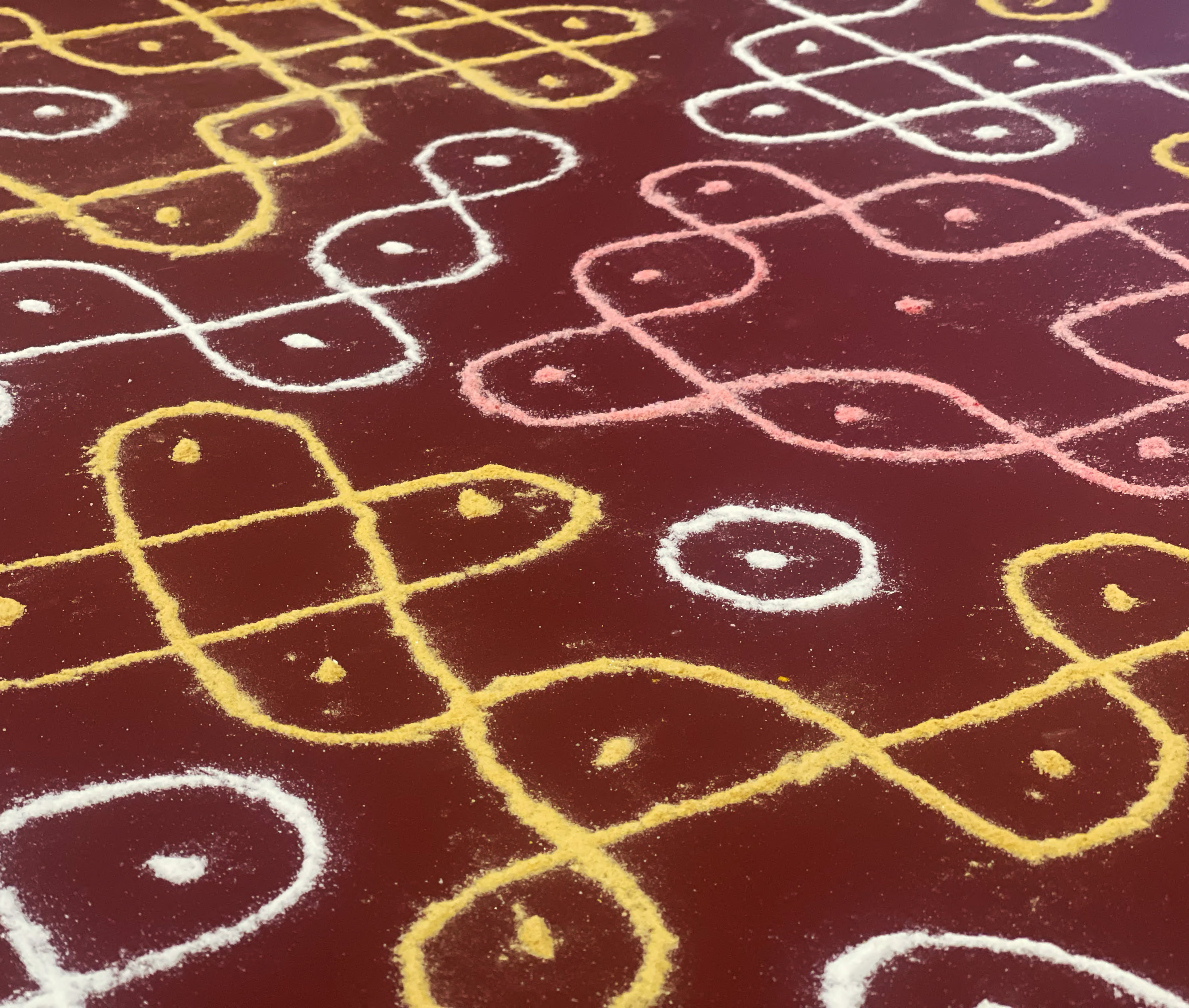
I KNEW THAT IF I WALKED IN YOUR FOOTSTEPS, IT WOULD BECOME A RITUAL
code, cyanolumen prints, video
For this work, I developed a machine learning model based on my own family photographs that is able to create its own images that combine and emulate characteristics of my family photos. I think of the model's remixing and approximating as a metaphor for personal and generational memory. I feel that our understanding of the past is always an approximation. Names are forgotten, moments are conflated with other ones. Memory is something that mutates over time and over generations. I think of this at times, as less of a fault and more of a healing fluidity that allows us to process the past in a way that's enmeshed with the context of the present.
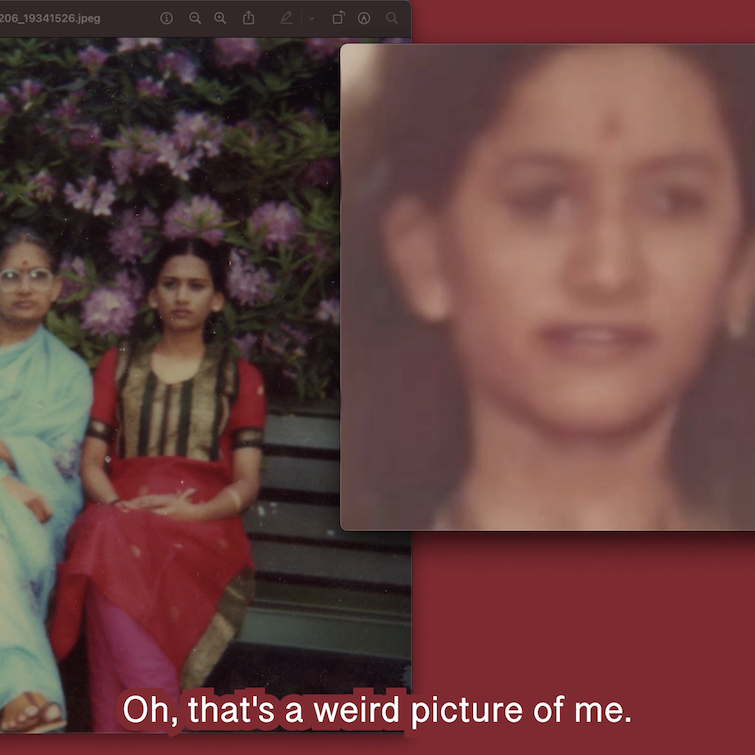
FAUX FOLIAGE
code, silkscreen, plexiglass, digital print
A machine learning model is trained on a scientific dataset of leaf photographs (The PlantVillage dataset) and slowly learns to produce its own leaves. This print of “specimens” showcases its output. Some leaves are in the early stages of learning, appearing as abstract blobs, while others are much more realistic, but feature oddities such as double stems or unlikely curvatures. A plexiglass overlay highlights these "mistakes."
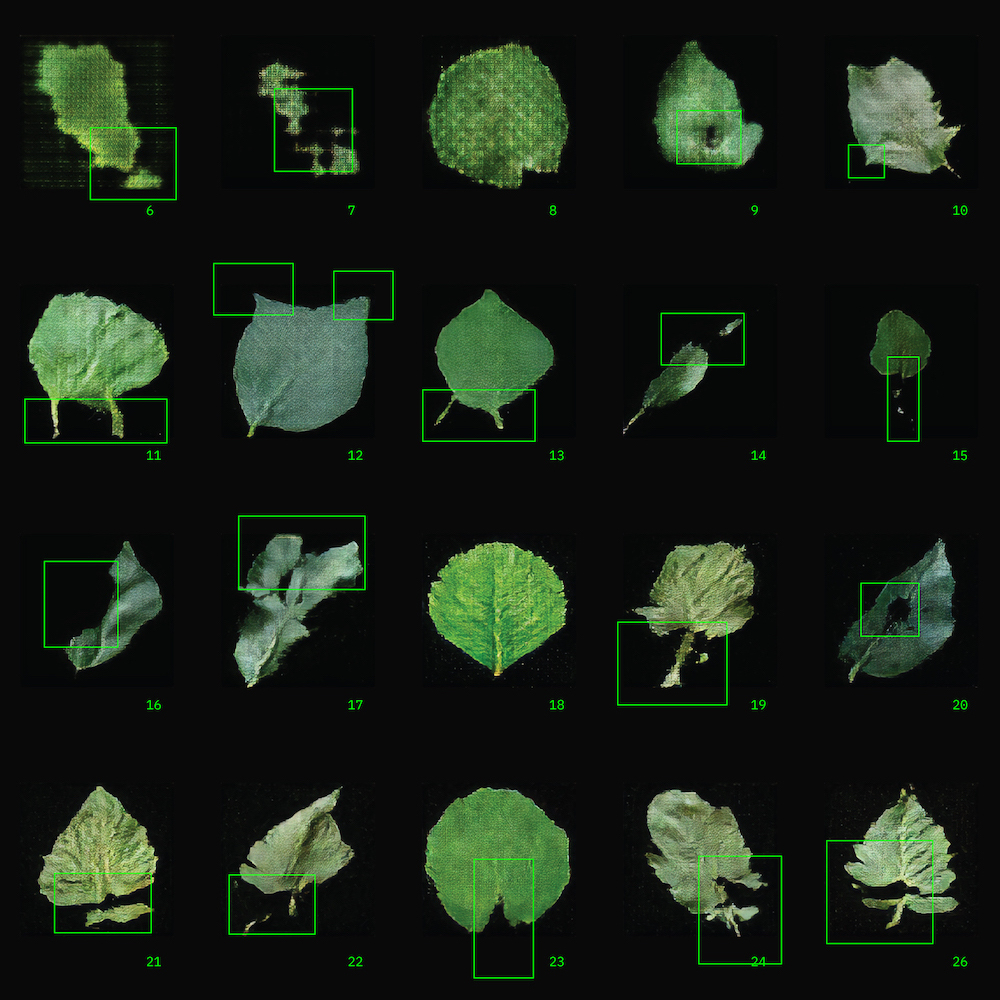
LENTICULARS
lenticular prints, hair, plant matter
Three lenticular diptychs of family photographs. Together, they reveal aspects of the relationships and restrictions of women in my family.
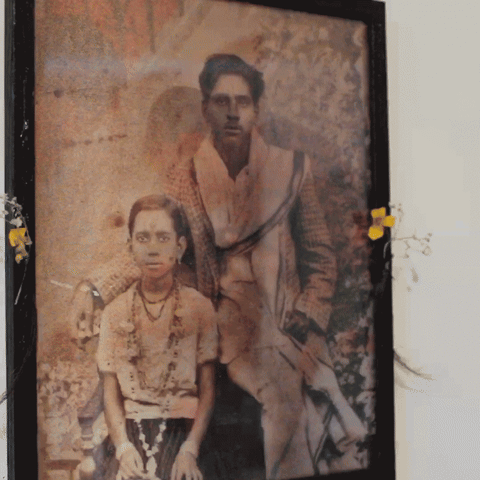
CLOUD9.GARDEN
*group project, code
The CLOUD9 Memorial Garden is a space for collective remembrance with care, gentleness and respect. Pandemic times limit how we can gather to mourn and remember. During periods of mass loss and isolation, creating intentional spaces to enact and celebrate collective memory is vital.
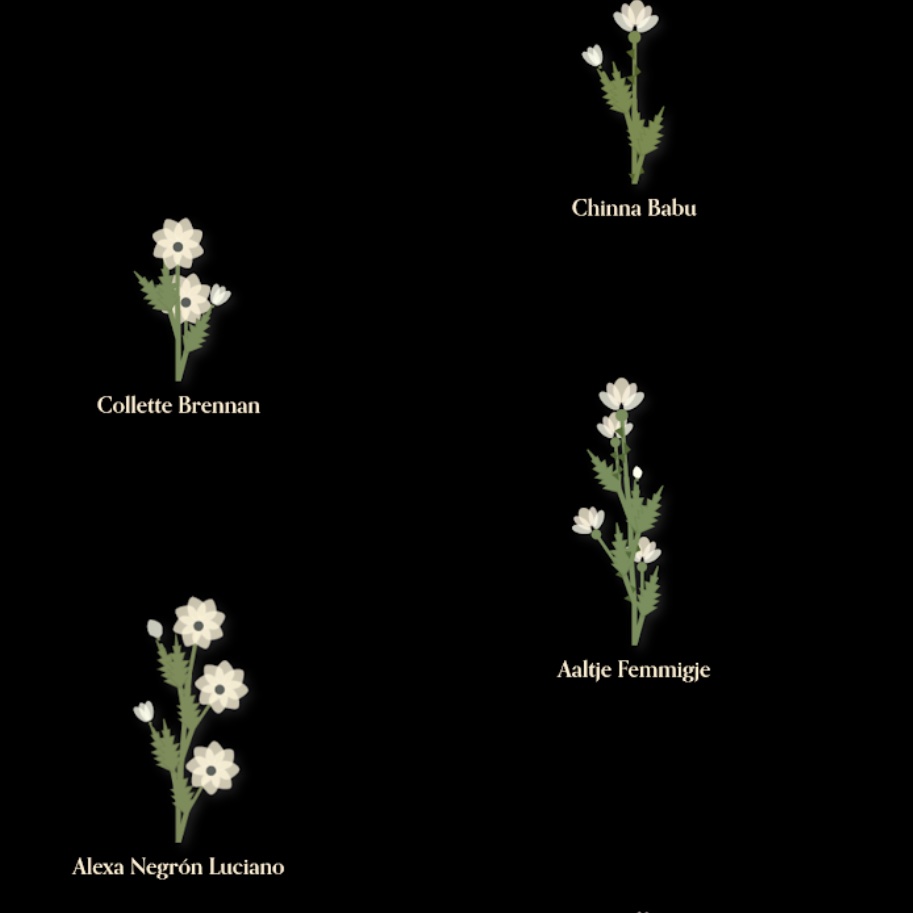
Recollections in Haldi & Light
code, lumen prints, turmeric anthotypes
Recollections in Haldi & Light uses a pre-trained machine learning depth-detection model to create silhouettes from my family photographs. These silhouettes are then used to produce digital negatives and printed on expired photo paper and turmeric anthotypes.
